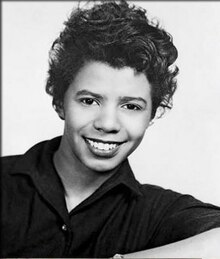
Lorraine Hansberry (80th Year Anniversary of Her Birth)

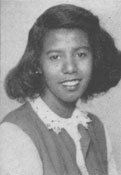
Her Early Life
The life of Lorraine Hansberry has been a story of black American history and American culture at the same time. Lorraine Vivian Hansberry was born on May 19, 1930. Her parents were Carl Augustus Hansberry Sr. and Nannie Louise Hansberry. Lorraine Hansberry was born in Chicago, Illinois. By 1937, Carl and his family moved to a home in the Woodlawn neighborhood’s all white Washington Park subdivision in defiance of a restrictive covenant. Back in the day, covenant policies in the Midwest and the West advanced basically housing discrimination against black Americans. This even caused a local backlash against the Hansberry family. So, the Hansberry family went and created a legal case to fight the discriminatory practice. In 1940, Carl Hansberry ran for Congress as a Republican, but he didn’t win the election. The U.S. Supreme Court ruled in favor of Carl in the case of Hansberry v. Lee. The decision enabled the Hansberry family to remain in their home in Woodlawn. It opened new homes to African Americans in Chicago, but restrictive covenants remain legal On May 1941, a decision existed in the case of Carl Hansberry Sr. v. Atchinson Topeka, Santa Fe Railway, Pullman Company. Carl Hansberry Sr. sued for discrimination during a train trip for which he paid for a first class ticket. The case was thrown out due to lack of jurisdiction. In 1944, there was the case of Perry Hansberry v. Franklin Delano Roosevelt: Perry Hansberry is drafted into the US military and sues the US Government, requesting that his draft order be rejected on the grounds that the army is segregated. Perry Hansberry bases this argument on the experience of his brother, Carl Hansberry, Jr., who already in the military. The case is thrown out due to lack of jurisdiction. Carl Hansberry passed away suddenly in Mexico of a cerebral hemorrhage while planning to move his family there. By 1948, Lorraine Hansberry enrolled at the University of Wisconsin. She studied many subjects. At the university, she saw the performance of Sean O’Casey’s Juno and the Paycock. This motivated her to become involved in theater. Lorraine Hansberry was always political in her life. She opposed the nuclear bomb droppings at Hiroshima and in Nagasaki in Japan. Lorraine Hansberry worked in favor the Presidential campaign of Henry Wallace. Henry Wallace ran as a Progressive Party candidate in favor of ending Jim Crow, of progressive taxation, and other progressive policies. By 1948, nationally, restrictive covenants are abolished with the Shelley v. Kraemer decision, and President Harry Truman ends racial segregation in the U.S. military with Executive Order 9981. Lorraine Hansberry joined the Communist Party in 1948.
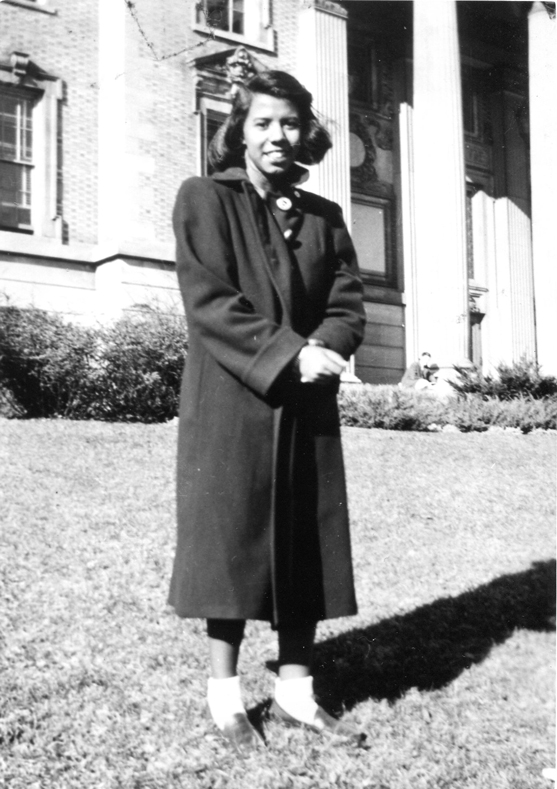
Further Education
By 1950, Lorraine left the University of Wisconsin to learn more about life. Her move to New York City changes her life. Her poem “Flag from a Kitchenette Window” is published in Masses and Mainstream, an American Marxist monthly. In November, Paul Robeson founded Freedom newspaper in Harlem, publishing an “introductory issue” with the editor Louis Burnham. Lorraine works for the paper as a subscription clerk, receptionist, typist and editorial assistant. From 1951 to 1960, Carl Hansberry Jr. and the Hansberry family faced lawsuits for building code violations in several of their apartment buildings. In 1951, the first issue of Freedom is published. Lorraine traveled to Mississippi with a delegation of women to petition the Governor for a stay of execution for Willie McGee. On May 8, McGee is executed after protests on his behalf and several stays of execution. In July, Lorraine’s poem about Willie McGee’s execution, “Lynch song,” is published in Masses and Mainstream. In the fall, Lorraine joins The Sojourners for Truth, a delegation of 132 Black women seeking an end to war and racial discrimination, in Washington, D.C. In 1952, Lorraine becomes associate editor of Freedom. In March, she travels to Montevideo, Uruguay, to speak on behalf of Paul Robeson at the Intercontinental Peace Conference.
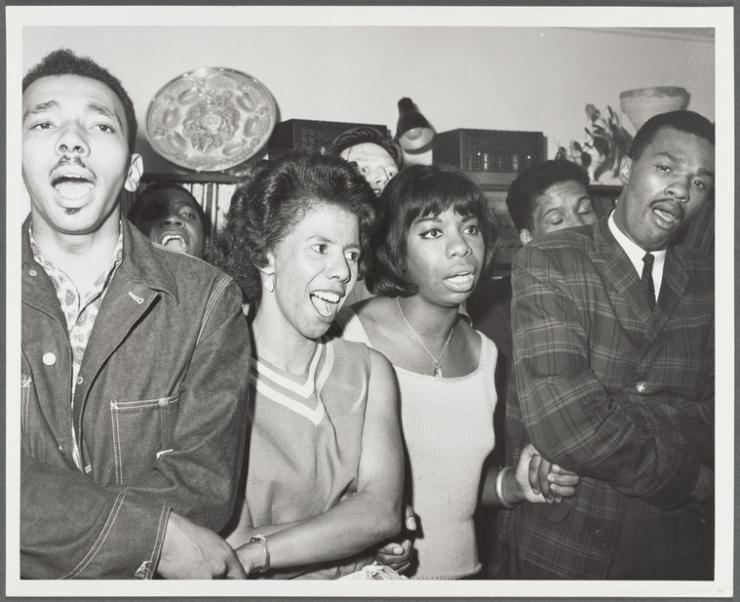
Works of Genius
Her passport is revoked upon her return to the U.S., and the FBI begins lifelong surveillance of her. In July, Lorraine meets Robert Nemiroff. In December, she resigns from full time work at Freedom to focus on creative writing. By 1953, Lorraine and Robert joined protesters against the execution of Ethel and Julius Rosenberg. They were convicted for treason for selling nuclear secrets to the Soviet Union. In June, Lorraine married Robert in her mother’s home in Chicago. The Freedom newspaper ended publication in 1955. By 1956, Lorraine is able to quit her part-time work and focus on writing after the songwriting success of her husband and his college friend Burt D’Lugoff. “Cindy, Oh Cindy,” written using pseudonyms, is released by Vince Martin and the Tarriers and Eddie Fisher. In 1957, Lorraine and Robert secretly separate. By the fall of 1957, Lorraine holds a dinner party with Phil Rose and Burt D’Lugoff to read her first draft of the play that became A Raisin in the Sun. Phil Rose wants to produce it and options the play for $500. Rose gets his friend Sidney Poitier to sign on to star in Hansberry’s play, and Poitier, in turn, recommends Lloyd Richards as its director. Around the same time, the first issue of The Ladder, the first national publication for lesbians, is published by the Daughters of Bilitis. In 1958, Lorraine writes three short stories for ONE Magazine (“The Budget,” “The Anticipation of Eve,” and “Renascence”) and another short story called “Chanson du Konallis” for The Ladder under the pseudonym Emily Jones. In the fall, nearly 1,000 black actors show up for auditions for A Raisin in the Sun.

:format(jpeg):mode_rgb():quality(90)/discogs-images/R-2764932-1300023385.jpeg.jpg)
Being Young, Black, and Gifted (and her Later Life)
By 1959, Lorraine Hansberry’s life would change forever. In that year, A Raisin in the Sun had its first public performance at the Shubert Theater in New Haven, Connecticut as part of a 4 night tryout. Weeks later, the play started a two week tryout run at the Walnut Theater in Philadelphia. The writer James Baldwin attended the performance. He later wrote about witnessing theater history. The FBI sent an agent to assess the play for Communist influences. In February of 1950, A Raisin in the Sun started its final tryout. It was a 4 week run at the Blackstone Theater in Chicago. During the same month, Sidney Poitier was nominated for an Academy Award for Best Actor for his role in the movie, The Defiant Ones. By March of 1959, Lorraine gave a keystone speech entitled, “The Negro Writer and His Roots” at the American Society of African Culture (AMSAC) Negro Writers Conference at Henry Hudson Hotel in New York. During the same month, A Raisin in the Sun premiered on Broadway at the Ethel Barrymore Theater. Lorraine Hansberry received the New York Drama Critics’ Circle Award for the play on April of 1959. During the spring of 1959, Rand House published A Raisin in the Sun. By April of 1959, David Attie photographs Lorraine in her Bleecker Street apartment for Vogue. Lorraine and A Raisin in the Sun’s Director, Lloyd Richards, are among the guests at a roundtable discussion on the state of Broadway on David Susskind’s Open End television show. By May of 1959, Lorraine was on the broadcast public affair program Look Up and Live. She sat for an interview with Mike Wallace, and was interviewed by Studs Terkel for his radio show in Chicago. She gave a lecture about American drama at Roosevelt University in Chicago for the school’s Women Scholarship Association. Lorraine Hansberry and film director Otto Preminger appear on At Random, Irv Kupcinet’s local weekly television conversation on WBBM. The conversation became spirited as Hansberry described Preminger’s film Porgy and Bess as bad art for its depiction of racial stereotypes. Back then and today, Porgy and Bess remains controversial. In August of 1959, she completed her teleplay The Drinking Gourd for an NBC series commemorating the centennial of the Civil War. The series was cancelled before production begins due to lack of interest from funders. Lorraine completed the screenplay for A Raisin in the Sun. After 198 performances, Ossie Davis replaced Sidney Poitier as Walter Lee Younger in A Raisin in the Sun. By October 1959, A Raisin in the Sun moves to Belasco Theater. In 1960, Lorraine used money from success of A Raisin in the Sun to purchase a home at 112 Waverly Place in Greenwich Village, where Burt D’Lugoff and Hansberry’s partner and friend Dorothy Secules live. By June of 1960, A Raisin in the Sun ended its Broadway run after 530 performances. In 1961, the film version of A Raisin in the Sun premieres at the Cannes Film Festival and wins the Gary Cooper Award for Human Values. Later that year, it is released by Columbia Pictures in the U.S. Lorraine and Lloyd discussed their work, and a scene of Hansberry’s work-in-progress, “Toussaint,” is performed on Playwright at Work, a television series hosted by Frank Perry. In 1962, Lorraine Hansberry moved to Croton-on-Hudson, New York. By October of 1962, she spoke at an anti-HUAC rally in delivering her “My Government is Wrong” speech. In 1963, Lorraine Hansberry experienced an attack and collapsed in pain. She is hospitalized for 10 days. During this time, doctors diagnosed her with cancer. She is told that she has anemia and bleeding ulcers.


In May of 1963, there was a meeting between Attorney General Robert F. Kennedy and many civil rights activists, entertainers, and artists like Lorraine Hansberry. They discussed racial tensions at Kennedy’s Manhattan apartment. In June 1963, Lorraine Hansberry, Nina Simone, and other influential people were at a press conference at the home of actor and activist Theodore Bikel in order to publicize the upcoming SNCC (Student Nonviolent Coordinating Committee) benefit concert at Carnegie Hall. Lorraine chaired a fundraiser in Croton-on-Hudson to raise money for civil rights organizations’ work in the South. The event raised $5,000. Some of the money went towards purchasing the Ford station wagon driven by Andrew Goodman, Michael Schwerner, and James Chaney the following summer. During the same month, Lorraine had an unsuccessful operation in New York City. In August of 1963, Lorraine underwent surgery at the Lahey Clinic at the New England Baptist Hospital in Boston. In 1964, the fundraising book for SNCC was released called, “The Movement: Documentary of a Struggle for Equality.” It is made up of photos with commentary by Lorraine Hansberry. It was published by Simon and Schuster. Robert has a divorce from Lorraine Hansberry in Mexico. By May of 1964, Lorraine released from the hospital for the afternoon, delivered what became to be “To Be Young, Gifted, and Black” speech to winners of a writing contest. It was sponsored by the United Negro College Fund. By June 1964, Lorraine Hansberry left her sickbed to argue for militant commitment to black causes as a participant in “The Black Revolution and the White Backlash,” which was a Town Hall debate between black artists and white liberals. Lorraine wanted white liberals to be radicals no longer just token liberals. The event is sponsored by the Association of Artists for Freedom, of which Lorraine Hansberry was a member. Freedom Summer civil rights workers Andrew Goodman, James Chaney, and Michael Schwerner went missing in Mississippi by 1964. The three are last seen in the Ford station wagon purchased with proceeds from Lorraine’s fundraiser. The Ford was later found, burned, in a swampy area near Philadelphia, Mississippi. The bodies of the three men were later discovered in an earthen dam.
By the fall of 1964, Lorraine named Robert literary executor of her will, moves to the Hotel Victoria on Seventh Avenue to be near rehearsals of her second Broadway play called, The Sign in Sidney Brutstein’s Window. The play opened in October of 1964 at the Longacre Theater. It was co-produced by Robert Nemiroff and Burt D’Lugoff. Peter Kass directed the play. Lorraine Hansberry attended the opening night. While the play at first struggled at the box office, a celebrity campaign organized by Robert Nemiroff, Mel Brooks and his wife Anne Bancroft make the play the longest running show of that season. Lorraine and Robert officially divorced on the date of March 10, 1964 atJ uarez, Mexico on the basis of incompatibility. It is no secret that Lorraine Hansberry had romantic relationships with many women whose names are Renee Kaplan, a woman whose pseudonym was Eve Ward (from Tennessee), and Dorothy Secules (who was 15 years older than Lorraine Hansberry). When Lorraine was in the NYU Hospital, she was monitored by Secules and Nemiroff. Her disease grew rapidly. It went to harm her immune system, she traveled in a wheelchair in Central Park, her legs were numb, and she had speech loss. She cried, but her continued to work bravely. She wrote the Sign in Sidney Brustein's Window about a NY intellectual trying to work in politics. Robert celebrated Christmas 1964 in the hospital, and Lorraine spoke about a necklace as a present. Lorraine Hansberry celebrated New Year's 1965 in the hospital. On January 12, 1965, Lorraine Hansberry passed away of cancer of the duodenum at the age of 34 at University Hospital. The Sign in Sidney Brustein’s Window closed.
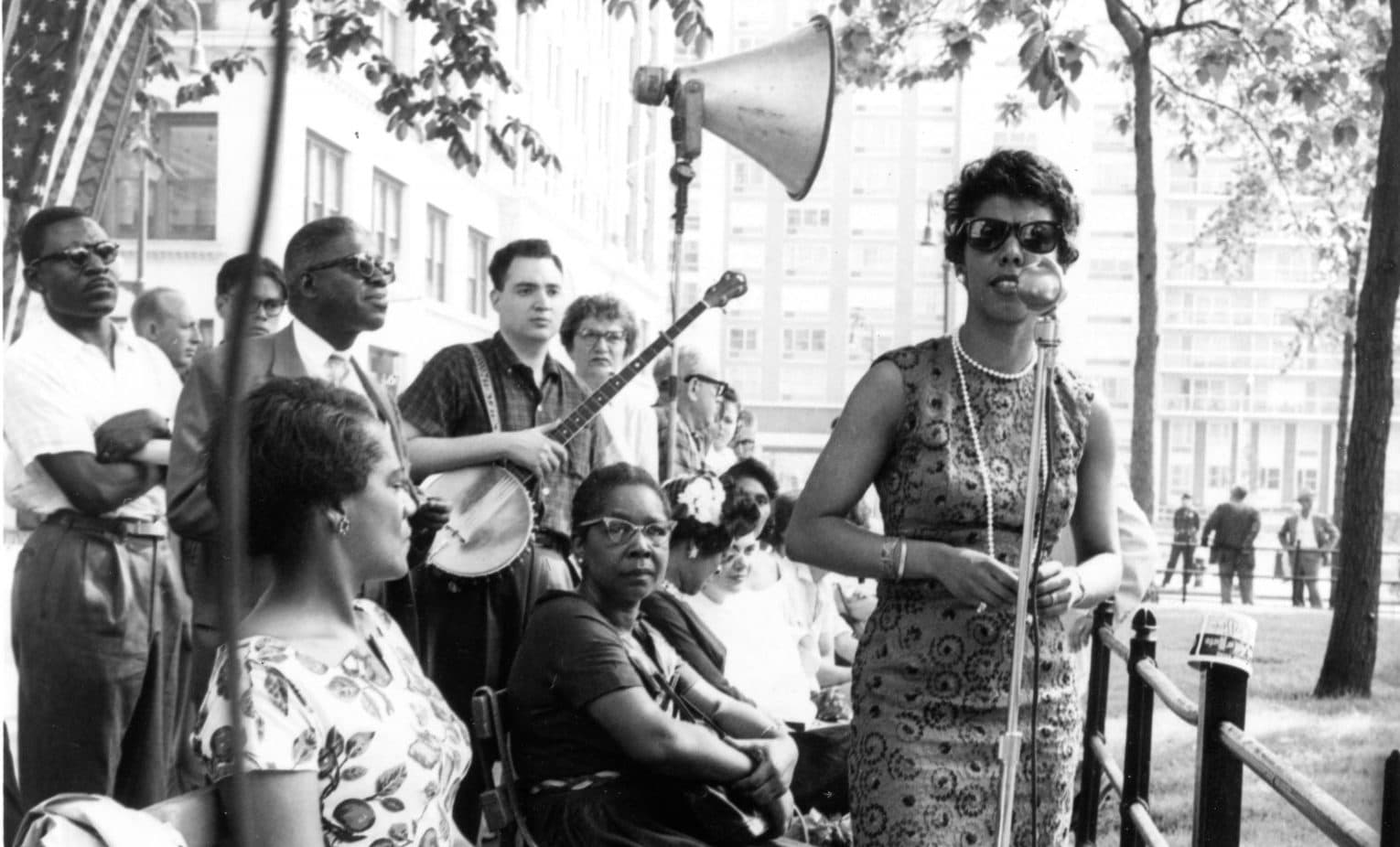
"There is always something left to love. And if you ain't learned that, you ain't learned nothing."
-Lorraine Hansberry
Her Passing and Legacy
On January 15, 1965, Lorraine’s memorial service took place at the Church of the Master in Harlem. Over 600 people attended despite a huge blizzard. The people there were Malcolm X, Ossie Davis, Diana Sands, Sammy Davis Jr., and other people. Ruby Dee and Shelley Winters spoke at the memorial. Paul Robeson delivered the eulogy. Nina Simone performed. Dr. Martin Luther King Jr. sent a telegram that was read. James Baldwin was not able to attend, but he sent his condolences to Robert Nemiroff and the Hansberry family saying, “I think we must resolve not to fail her, for she certainly did not fail us.” Lorraine is buried in Croton-on-Hudson at Bethel Cemetery. In 1969, the historic “To Be Young, Gifted, and Black” was first performed off Broadway at the Cherry Lane Theater. It was a play about the life of Lorraine using her own words. It was compiled by Robert Nemiroff. Nina Simone (or Lorraine’s friend) performed her song “To be Young, Gifted, and Black” for the first time at a Morgan State University jazz festival. The song is inspired by Lorraine Hansberry’s words. In 1970, Les Blancs was opened in Broadway’s Lonacre Theater. It was a play by Lorraine about colonialism set in Africa and edited by Robert Nemiroff. It ran for one month and has 40 performances. In 1978, Lorraine Hansberry was publicly identified as a prominent LBGTQIA+ leader when Barbara Grier (the former editor of the lesbian periodical The Ladder) named her as the author of two 1957 letters to the publication. New notes and documents confirm that Lorraine was involved in lesbian relationships with numerous women in New York City, and that she had a crush on Eartha Kitt. In 1989, PBS premiered A Raisin in the Sun directed by Bill Duke plus produced by Chiz Schultz for American Playhouse. Danny Glover and Esther Rolle star in the television film. In 2004, there was a revival of A Raisin in the Sun. It was directed by Kenny Leon. It opened on Broadway at the Royale Theater. Phylicia Rashad, Audra McDonald, Sean Combs, and Sanaa Lathan star. There is a documentary about her life by Tracy Heather Strain is in existence. There is a recent book by Imani Perry entitled, "Looking for Lorraine: The Radiant and Radical Life of Lorraine Hansberry" that details Hansberry's life in great detail. Lorraine Hansberry was truly a genius in her creativity and artistry.

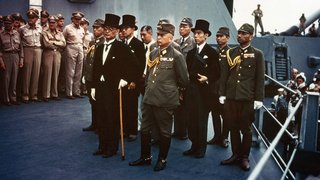

75 Years After VE and VJ Day
Today, we remember not only the heroic victory of the Allied Powers during World War II. We celebrate the heroes among every color who made this reality real. Even today, many people don't know that black people were involved in the events of D-Day at Normandy, France. Some folks don't know that Native Americans were some of the great code-breakers who helped to defeat Axis imperialists. Numerous women were involved in the World War II era as well. Therefore, VE Day was the first Allied victory. The Nazis were being roundly defeated as early as 1944 after the Soviet victory at Stalingrad. FDR, Churchill, and Stalin debated on what a future Europe would be after Nazism would be gone forever. All three leaders agreed that they wanted Germany to be divided into sectors that would be run by the Allied Powers. FDR and Churchill disagree with Stalin's actions in Poland that they deemed anti-democratic. Stalin wanted an early entry of America into France in order to ease the burden of them in the European theater. After the Battle of the Bulge (in 1945), Allied forces started to fully defeat Nazi Germany. Hitler and his girlfriend committed suicide at Berlin. The war in Europe was over by May 8, 1945. This was VE Day or Victory in Europe Day.
The War in the Pacific took a much longer period of time. Allied forces in many cases had to travel from island to island in order for them to defeat Japanese forces. In America, racist sentiments inspired the evil interment camps against innocent Japanese American citizens, race riots against people of color in the United States (from Detroit to Los Angeles), and African American experiencing Jim Crow oppression. Still, African Americans fought for justice abroad and at home. They desired the Double V movement to be successful. Japan was losing by 1945, and a debate existed on whether there ought to be an atomic bombing in Japan or not. Recently, scholars and found that Japan could have surrender and an atomic attack was unnecessary. Yet, Truman (who wanted to prove his aggressive posture) allowed the wicked nuclear bombings in Hiroshima and Nagasaki. The destruction of both blasts were so great that some of the survivors suffered radiation poisoning for decades to come after the attacks. Japan surrendered by September of 1945. Now, VJ Day or the Victory over Japan Day took place on August 15, 1945. Now, in 2020, we continue to honor the heroism and sacrifice of heroes who freed multiple continents from the Holocaust, imperialism, and others forms of tyranny.
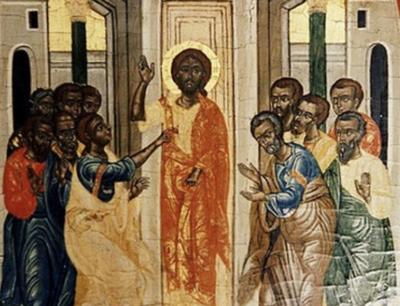
The Apostles
During this time of the year, it is always important to acknowledge the value of spirituality. Spirituality at its best is meant to stir up the soul, to help our neighbors, thoroughly, and to respect the concept of almsgiving. Christianity started with Jesus Christ. Later, Jesus Christ died, rose again, and is at the right hand of God the Father. His earliest supporters were his apostles and early followers. These 12 men including others (including women) would spread the message of Jesus Christ into multiple continents. They faced opposition and persecution (by the Roman Empire and others), but they continued in the faith. It is said by many that many apostles died by murder except for the apostle John (and others), who died of natural cases near the age of 100 years old. The Gospels were written around the time of 40-100 A.D. The New Testament outlines the life of Jesus Christ. Other non-Biblical sources describe the life of Jesus Christ like Flavius Josephus (37-100 A.D.), the Samaritan born historian Thallus, Cornelius Tacitus, Pliny the Younger, Lucian, Suetonius, the Talmud, and other sources. Josephus was a Judean Levite, and Tacitus was a Roman senator. Yeshua was crucified on the orders of the Roman governor of Judea named Pontius Pilate. Jesus Christ’s brother was Ya’akov (or James), and John the Baptist (Yokhanon) also lived in the region. The movement of Jesus spread into Greece, Rome, Africa, Spain, and India within a short period of time including the rest of the Roman Empire region. Even Josephus said that James was the brother of Jesus and their cousin was John the Baptist. The apostles were Simon ben Jonah (Peter), Kepha (Andrew), Ya’akov ben Zebedee (James), Yohhanan (John), Philip, Natanel bar Taimey (Bartholomew), Matityah (Matthew), Ta’om (Thomas), Thaddeus (Taddi), Shimon (Simon), Yehudah (Judas), and Judas’s replacement Matthias. The New Testament, especially the Gospel of Acts, described the lives of much of the apostles. By the time of the Great Commission, the Christian faith was spreading beyond the area of Israel. There were dozens of followers of apostles from Silas, Timothy, and Apollos. Therefore, it is important to show the truth that spiritual belief has a very prominent role in the essence of human existence.

Andrew
Andrew was the brother of Peter. Like many of the apostles, he lived a short life, but his influence would be wide ranging. He was born in ca. 5 B.C. at Galilee, Israel. His parents were Jonah and Joanna. Andrew was the first apostle that Jesus Christ called, and he was the first apostle to claim that Jesus Christ was the Messiah. He is mentioned 12 times in the New Testament. Andrew’s name is Greek, so his family was open to naming children after non-Jewish nomenclatures. Andrew also was a fisherman. Matthew 4:18-20 and Mark 1:16-20 outlined the story of Andrew fishing near the shore of the Sea of Galilee with Peter when Jesus encounters him. Andrew was once a disciple of John the Baptist. The Byzantine Church called Andrew Protoklete or the first called. Non-Biblical sources like Eusebius of Caesarea’s Church History claimed that Origen said that Andrew was sent to Scythia (in central Eurasia). Other sources said that he visited Greece and regions around the Black Sea. Andrew witnessed the miracle of Jesus and the loaves of bread. Andrew was one of the apostles who asked Jesus when the end times come. Jesus said that that Temple of Jerusalem would be destroyed (as this prophecy was fulfilled in 70 A.D.). Tradition said that Andrew was martyred by crucifixion in the Greek city of Patras in ca. 60 A.D. It is said that he wanted to be place in an X shaped cross showing respect to Jesus Christ. A similar story of Andrew’s passing was cited in Foxe’s Book of Martyrs in the following words: “…He preached the gospel to many Asiatic nations; but on his arrival in Edessa he was taken and crucified on a cross, the two ends of which were fixed transversely in the group. Hence the derivation of the term, St. Andrew’s Cross.” Andrew had great importance in church history.

Matthew
The apostle Matthew was a unique man. He was a tax collector (in the service of Herod Antipas or the tetrarch of Galilee). He was an outcast in Israel, because Jewish people back then (over 2,000 years old) viewed tax collectors as oppressors sent by the Roman Empire to exploit the lives of Jewish people. Back then, the Jewish people in Eretz Yisrael wanted freedom and liberation from Roman imperialism basically. Jesus Christ saw in Matthew a great deal of courage and forthrightness. He is also known as the author of the book of Matthew. The Book of Matthew in the New Testament gives a summary of the life of Jesus Christ and the earliest stories of the existence of Christianity. From taxing people at Capernaum to evangelizing human beings, Matthew lived a life filled with adventure. Tax collectors in Israel lived a dangerous life. People lied about their taxes regularly. Many tax collectors had little accountability too. He was an eye witness to the ministry of the Lord Jesus Christ. Matthew was also called Levi. The books of Matthew, Luke, and Mark confirmed that when Jesus first met Matthew, he was at a tax collector’s booth. Jesus told him to “Follow me” and Matthew got up and followed him. When the Pharisees criticized Jesus Christ on eating with tax collectors and sinners, Jesus said to them that he came to not call the righteous but the sinners (Mark 2:15-17). It is still a mystery on how he died or whether he died by martyrdom or natural causes. Early Church leaders like Irenaeus and Clement of Alexandria wrote that Matthew preached the Gospel to the Jewish community in Judea before going to other countries.


Thomas
Thomas is also known as Didymus. Some believe that Thomas was a twin. John said that Thomas was known as Didymus. Thomas means twin in Arabic. Thomas asked Jesus Christ about faith and life in general. Thomas asked Jesus where you are going. Jesus said that he is the way, the truth, and life (and that no one comes to the Father except by him). He is famous for at first doubting the resurrection of Jesus Christ. When Jesus showed who he was to him, Thomas ends his doubt. Thomas said that Jesus Christ is Lord and God (John 20:28). Thomas’ story represents a lot of faith and action. Tradition cited Thomas as traveling outside of the Roman Empire to preach the gospel. Some believe that he traveled as far as India to preach the gospel of Jesus Christ. Tradition said that Thomas reached Muziris (or North Paravur and Kodungalloor in he state of Kerala, India) in 52 A.D. He converted many people founding St. Thomas Christians or Mar Thoma Nazranis. Thomas is very popular in India to this very day. Thomas also wanted to risk his life to see Lazarus who had died from John 11:16. Some believe that Thomas came into Taxila, India as early as 43 A.D. India had a Jewish community during the 1st century as the Jewish Diaspora spread from Africa to India plus beyond back then. Tradition said that he made seven churches in Kerala. Eusebius of Caesarea quote Origen saying that Thomas was an apostle to the Parthians. St. Ephrem of Syriac Christianity wrote that Thomas was put to death in India. His remains were buried in Edessa. Syrian Christian tradition said that Thomas was martyred at Chennai in 72 A.D. on July 3rd. Kurt E. Koch said that Thomas possibly traveled into Indonesia via India with Indian traders.

John
The Apostle John was one of the most well-known of the 12 apostles. He lived longer than any of the other apostles. The Gospel of John and the Book of Revelations outlined some of the most eloquent, groundbreaking, and exciting literature of the New Testament. His words of The Word being God, as found in the book of John at John 1:1, were revolutionary. John was the son of Zebedee and Salome (or Joanna). He lived to the time of ca. 100 A.D. He was the brother of James. He was also a first disciple of John the Baptist. He was an early friend of Peter and Andrew. They traveled from Bethsaida to the Jordan. The Apostle John was Jesus’s half-cousin. His mother Salome being Mary’s sister. John and Andrew were Jesus Christ’s original disciples. John 2:1-4:54 showed John as being faithful to the spiritual cause. John worked his father Zebedee in a fishing business. Later, John worked in evangelism for life. He entered the High Priest’s home during Christ’s trial. He was with the other apostles in the Upper Room after Christ’s ascension (Acts 1:13). The Apostle John had a huge role in the early develop of Christianity. He helped to preach the Pentecost sermon (Acts 2:7-8), he helped Peter heal the lame man, he was in jail with Peter (Acts 4:1-3), and he evaluated theology greatly. He was under constant surveillance by the Roman Empire. He was imprisoned for a time. Peter, James, and John were witnesses to the Transfiguration of Jesus Christ. Later on, the Apostle John trained Polycarp, who would be the Bishop of Smyrna (in Turkey), Polycarp carried John’s message to future generations. Later, Polycarp taught Irenaeus. John is seen as the youngest of the apostles.
Philip
Philip was born at 5 A.D. at Bethsaida. Jesus reached out to him. Philip brought Nathaniel to Jesus. Philip told Nathaniel about the good news of Jesus. The gospel of John cited much story information about Philip. He is often shown as a friend to Nathaniel. It is said that he was martyred by being stoned to death after reaching many people with the gospel. He was an evangelist. He came to preach in Samaria (Acts 8:5). Acts 8 shown a story that an angel led Philip to preach to an Ethiopian eunuch (who was a court official of the Candace of Queen of the Nubians). Philip later explained the gospel of Jesus Christ to the man and baptized him along the road. Other Christian traditions said that Philip preached in Greece, Syria, and Phrygia. Philip said to Jesus to show them the Father during the Last Supper, and Jesus said that anyone who has seen the Son has seen the Father. On July 27, 2011 on Wednesday, many Turkish people reported that Archaeologist unearthed the tomb that they believe to be of the apostle Philip. The Italian archeologist Professor Francesco D’Andria stated that scientists found words that they believe is the tomb of Philip. It is said that he died in ca 80 A.D. in Hierapolis, Anatolia (or Turkey).

Peter
The Apostle Peter was a leader of Christianity. Peter traveled across the world, he was outspoken, and he defended Jesus Christ. He lived from ca. 1 B.C to ca. 67 A.D. His original name was Simon. Jesus Christ changed his name to Peter meaning rock. Peter worked as a Galilean fisherman and was the brother of Andrew. They came from the village of Bethsaida (John 1:43, 12:21). Peter followed John the Baptist. He or Peter was also married which a lot of people don’t know (even today). Peter knew of his imperfections and admitted his sins to Jesus Christ. He was bold to be the first apostle to call Jesus Christ the Son of the living God (Mark 8:29). Luke 5:6-8 included verses that showed Peter along with his brother Andrew as among the earliest disciples of Jesus Christ. Peter left being a fisherman to being an apostle. Back then, fishermen worked long hours, they dressed unconventionally, and many had tempers. Jesus wanted Peter and Andrew to convert people to the faith. Jesus predicted that Peter would betray him 3 times. Peter denied that this would happen. Then, it happened as Jesus Christ has said. Peter witnessed the many miracles of Jesus Christ. Jesus Christ in Matthew 24 predicted that the end of the age would come when the gospel would be preached to the four corners of the Earth. That didn’t happen back then. Today, it is different. Peter was the first one to preach on the day of Pentecost after the coming of the Holy Spirit. He preached to Gentiles greatly. His later life wasn’t easy. He was imprisoned, brutalized, and murdered by the Roman Empire. Church historians Tertullian, Origen, and Eusebius wrote that Peter was crucified upside down because, he felt unworthy to be crucified in the same way that Jesus Christ was crucified. Many sources mention that he preached in Rome before his death. Roman Catholics called him the first Pope,which isn't true. Back then, Linus was the first bishop of Rome. There were no popes in the early church. Cyprian said that there are no bishop of bishops during the 200's A.D. In ca. 64 A.D., there was the great Fire of Rome. The Emperor Nero blamed falsely Christians for the fire, and many Christians were murdered.
Simon the Zealot
Simon the Zealot has an unknown story in many respects. The Zealot could be in reference to the Jewish political sect called the Zealots who wanted to overthrow Roman domination over Israel via the Messiah. It may mean that he was zealous of the teachings of the Torah and Jesus Christ. Simon was present at the wedding in Cana in John 2. That was when Jesus performed his miracle and turned water into wine. It is said that Simon preached in Egypt. Flavius Josephus (the Jewish-Roman historian from the first century) mentioned the First Jewish/Roman war where the Zealot political group fought for independence from the Roman Empire. Josephus fought against the Romans in that war, and Josephus surrendered to Vespasian. Josephus was later granted Roman citizenship after he praised the Roman Emperor Vespasian. The Apostle Simon lived a life of zealous faith in the Most High.
Bartholomew
Bartholomew was introduced to Jesus Christ through Philip. He is known also as Nathaniel of Cana in Galilee. This is shown in the Gospel of John. He is shown also as one of the witnesses of the Ascension (as found in Acts 1:4, 12, and 13). According to Caesarea’s Ecclesiastical History in 5:10, Bartholomew went on a missionary tour of India after the Ascension. He left behind a copy of the Gospel of Matthew. Other traditions mentioned him as being a missionary to Ethiopia, Mesopotamia, Parthia, and Lycaonia. Traditions mentioned that he also preached in Armenia. He is said to have been martyred for having converted Polymius, the king of Armenia, to Christianity.
Judas Iscariot
He was the traitor. He was once an apostle of Jesus Christ. He betrayed Jesus to the Sanhedrin in the Garden of Gethsemane by kissing him and calling him rabbi. Jesus predicted his betrayal in the Last Supper as found in 26:15. Judas betrayed Jesus for thirty pieces of silver. Luke 22:3 and John 13:27 suggest that he was possessed by Satan. Judas learned that he was crucified later on. He tried to return the money that he had been paid for his betrayal to the chief priests. He later committed suicide by hanging. Acts 1:18 mentioned Judas died in a harsh death. Later, Matthias took the place of Judas as apostle.
James
The Apostle James was the son of Zebedee and the brother of John. He lived a very short life, but his influence was very powerful as it relates to religious history. James was a fisherman who worked on the Sea of Galilee. James witnessed the daughter of Jairus being raised form the dead (Mark 5:37-47), the Transfiguration (Matthew 17:1-3), and the agony of Jesus at the Garden of Gethsemane (Mathew 26:36-37). When James wanted to burn a Sarmatian village that rejected Jesus, Jesus didn’t approve of this. He called James and John Boanerges or son of thunder because of their tempers. James was killed under the order of King Herod Agrippa I of Judea in ca. 44 A.D. in a general persecution of early Christians. He was from Capernaum.
James the Lesser (or the Younger)
He is a different person than James, son of Zebedee. Many verses of the Bible like Matthew 27:56 and Mark 15:40 called James the younger as the son of Mary (she had a son named Joseph). Some believe that he is also the brother of Jesus. Other people call James the Less as the son of Mary (the wife of Alpheus). This Mary was the sister of the Mary who is the mother of the Lord Jesus Christ. Some view Judas the Less’s mother as Mary Clopas.
Jude (Thaddeus)
Jude is known also as Thaddeus. He is called as possibly one of Jesus’ brothers. He is called the son of James as found in Luke 6:13-16. Traditions show that Judas preached in Judea, Saria, Idumea, Syria, and Libya. The Letter or Epistle of Saint Jude in the Bible is usually attributed to the Apostle Jude. He possibly could speak Greek and Aramaic. It is said that Jude was among the first apostles who preached the Gospel to Armenia. Tradition said that Jude suffered martyrdom in ca. 65 A.D. at Beirut in the Roman province of Syria. There is a plain ossuary marked with the inscription of Judas Thaddaeus. It was found in Kefar Barukh, Jezreel Valley, alongside fragments of four uninscribed ossuaries. The site was dated by lamps and other pottery to no later than the early 2nd century.

Conclusion.
For over 2,000 years, Jesus Christ has changed history forever. From religious teachings to social movements, tons of human beings know of his name. He was falsely accused by his haters (from jealous people to members of the religious establishment back then) back then and today. During the time of Pontius Pilate, he was crucified and rose form the dead. Also, he gave to the public a revolutionary gospel of love, peace, and reconciliation with God the Father. Jesus is not God the Father, but he is the son of the living God as in the Trinity. He is God made manifest in the flesh (1 Timothy 3:16). One of the titles of the Son of God is Emmanuel meaning God with us (Matthew 1:23). Therefore, the cornerstone of the Christian faith is the Virgin Birth, the deity of Yeshua, and the resurrection. His apostles were preachers and messengers who sent the gospel in many places of the world. They were unyielding in the proclamation of desiring people of every color and background to worship the Most High God. By the year of 100 A.D., the gospel was found from Spain to India. Many of the apostles were murdered, because a growing faith was reviled by leaders of the Roman Empire (and others who hate monotheistic views). Some early Christians were murdered and eaten by lions in the Roman Colosseum. Although, the words and deeds of the apostles are forever etched in the consciousness of the believers in the Savior. That is why the stories of the apostles will always have preeminent importance. In the near future, I will write more on spiritual issues like I did many years ago. People know what my creed is, and I am not ashamed of my religious views.

Conclusion (for Winter 2020)
Dreams will blossom alive daily. Every time a child is born in the Universe, miracles and dreams flourish. Therefore, regardless of what anyone says, continue to follow your own path. Just a few years ago, I never envisioned knowing so much of my genealogy. Now, I can trace my genealogy back all the way back to the 1700’s. Today, we live in polarizing times politically, socially, and racially. We witness a President who is unapologetic in his cruelty by demonizing women, people of color including black people, veterans who passed away, and peaceful protesters. Yet, we still believe in the Dream. The Dream is a world ideal that anyone born on this Earth should have not only equality but justice. Anyone should have the right to live and to pursue their own sense of happiness without oppression or unjust discrimination. That is what we believe in. Many people back then and today fought earnestly for that dream to be fulfilled. As we approach the year of 2030 very soon, we understand that justice is not based on a clock. It must be earnestly fought for. We have to continuously work together in each generation to seek out the social liberation that is ours by birthright. We have witnessed actors, actresses, athletes, scholars, activists, judges, etc. making contributions in the world. Also, it is important to recognize our own value. Heroism can be unsung. You don't have to be famous to be great. Being yourself is a truism that lives onward forever and ever. Our dignity is not up to sale.
The Pentagon has confirmed that the U.S. strike at the Baghdad airport that has killed the top Revolutionary guard commander Qassem Soleimani. The Pentagon said that Qassem was a terrorist who killed American people. The Pentagon said that Qassem and his Quds forces were planning more attacks in Iraq against Americans. The Pentagon said that Soleimani organized the attacks at the U.S.embassy in Baghdad. This is a new phase of the war on terror without question. We have been in this war on terror for almost 20 years now. Iran is a mostly Shia country, and Iraq is controlled by the Shia mostly. Therefore, this conflict is geopolitical and religious as Saudi Arabia is mostly Sunni. People are waiting on what will happen next. This is the most significant assassination of a person in the region in a long time. Soleimani was involved in the Iran-Iraq War from 1980-1988. He was involved in helping Iraqi militias in stopping ISIS (or the Islamic State of Iraq and Syria) forces in Iraq.
People are questioning if Trump notified Congress or the gang of 8 before doing this. Iran isn't Iraq. Iran has a stronger air force, army, proxies, and navy than Iraq. Qassem was never a hero, as he was a person who organized murder. The nuclear deal is over. That deal was a legitimate one organized by Obama which helped to stabilize relations. Now, Trump has ended that agreement, and we witness more problems involving Iran. This is the worst relationship between America and Iran since 1979. There is no question that Iran will probably use reprisals or responses worldwide. Iranians have promised revenge. Americans are told to get out of Iran. Also, there are security measures in place in large cities from New York City to Los Angeles. This event could lead into a new war in the Middle East. Another person was killed in the drone attack. He was Abu Mahdi al-Muhandis or the second in command of the Popular Mobilization Forces (PMF), the powerful coalition of Iraqi Shia militias.
This comes after the Pentagon has dispatched another 750 U.S. paratroopers to the Middle East. 4,000 more are under high alert. Many Democratic candidates have criticized Trump for escalating the problems in the Middle East. This also comes after the protesters marched on the U.S. embassy in the fortified Green zone. The U.S. Marines fired tear gas, stun grenades, and warning shots to try to disperse the protesters. Apache attack helicopters circles overhead and fired flares to the crowds. Many Iraqi leaders from the President, prime minister, to the head of Parliament have criticized the drone strike as a violation of Iraqi sovereignty. Many people have omitted that Iraqi sovereignty is important to respect.
We don’t need to relinquish our integrity to be free. We can always maintain our core beliefs systems. Another lesson in life is to recognize our own responsibility to contribute our gifts in making the community better. From the past, we honor Harriet Tubman’s courage, we respect Malcolm X’s criticisms of injustice, and we believe in Ella Baker’s grassroots organizing. Also, we certainly understand that the younger generation has heroes too. Some may not report on this, but there are tons of young people working in charities, standing against racism, and focusing on humanitarian works that outline the glory of human compassion. That is why we are in this to win this. The older I get, the more progressive I get. I came a long way, and we have a very long way to go in seeing the world transformed prodigiously. Also, another great point is about preparation. With the events in Iraq, Australia, America, etc. we have to prepare oursevles. That is why I have no problem with many in the Internet and in the streets promoting real health information, anti-radiation measures, true medicine, getting ethics in order, promoting true black unity, and focusing on learning about geopolitics internationally. In the 2020s, we should have hope but not naivete.
In life, there is a time and place for things. There is a time for humor and there is a time to be serious on things. There is a time to advance relaxation, and there is a time to focus on working. Therefore, we will move forward in harmony with truth and righteousness.
By Timothy
No comments:
Post a Comment